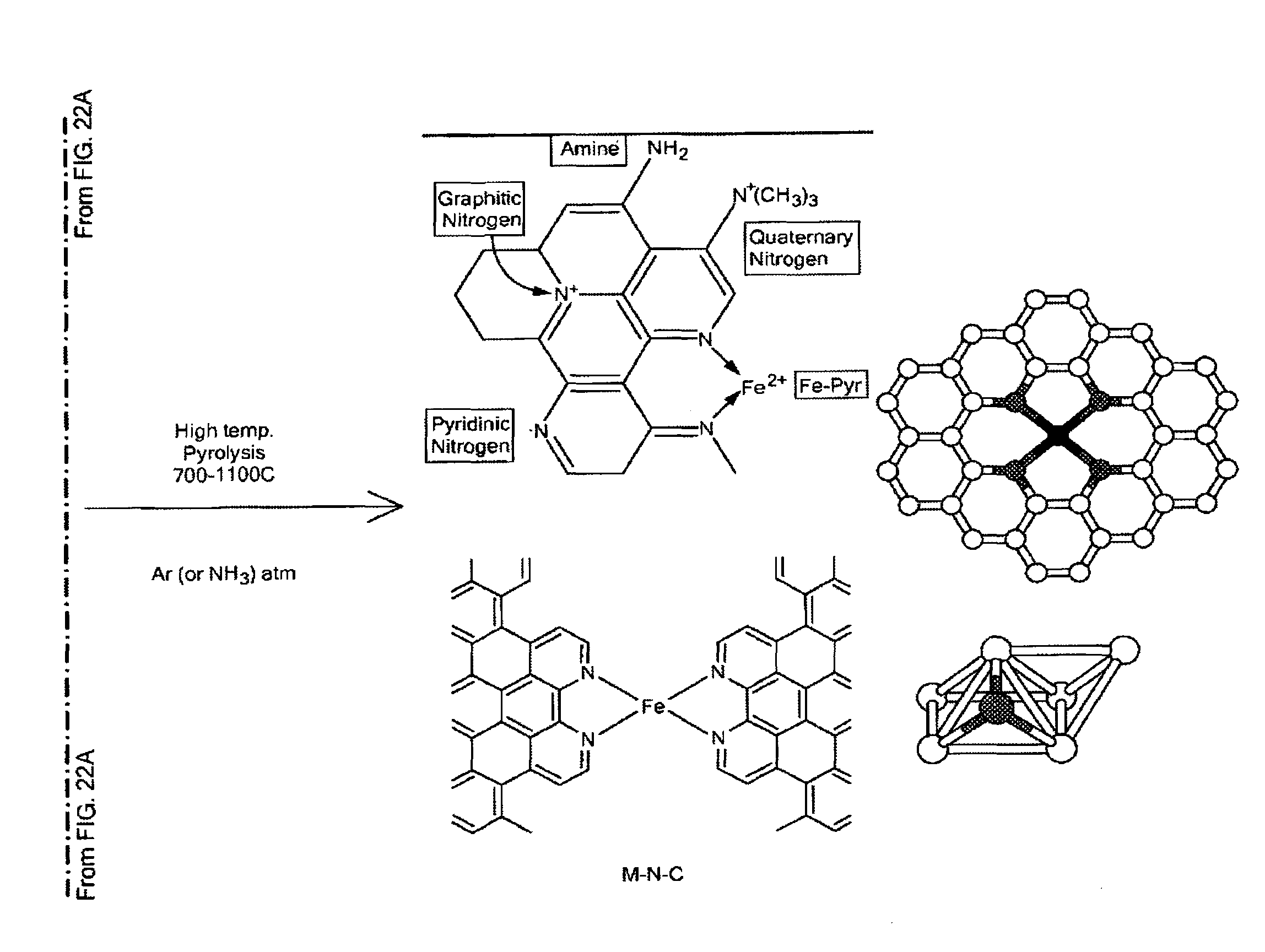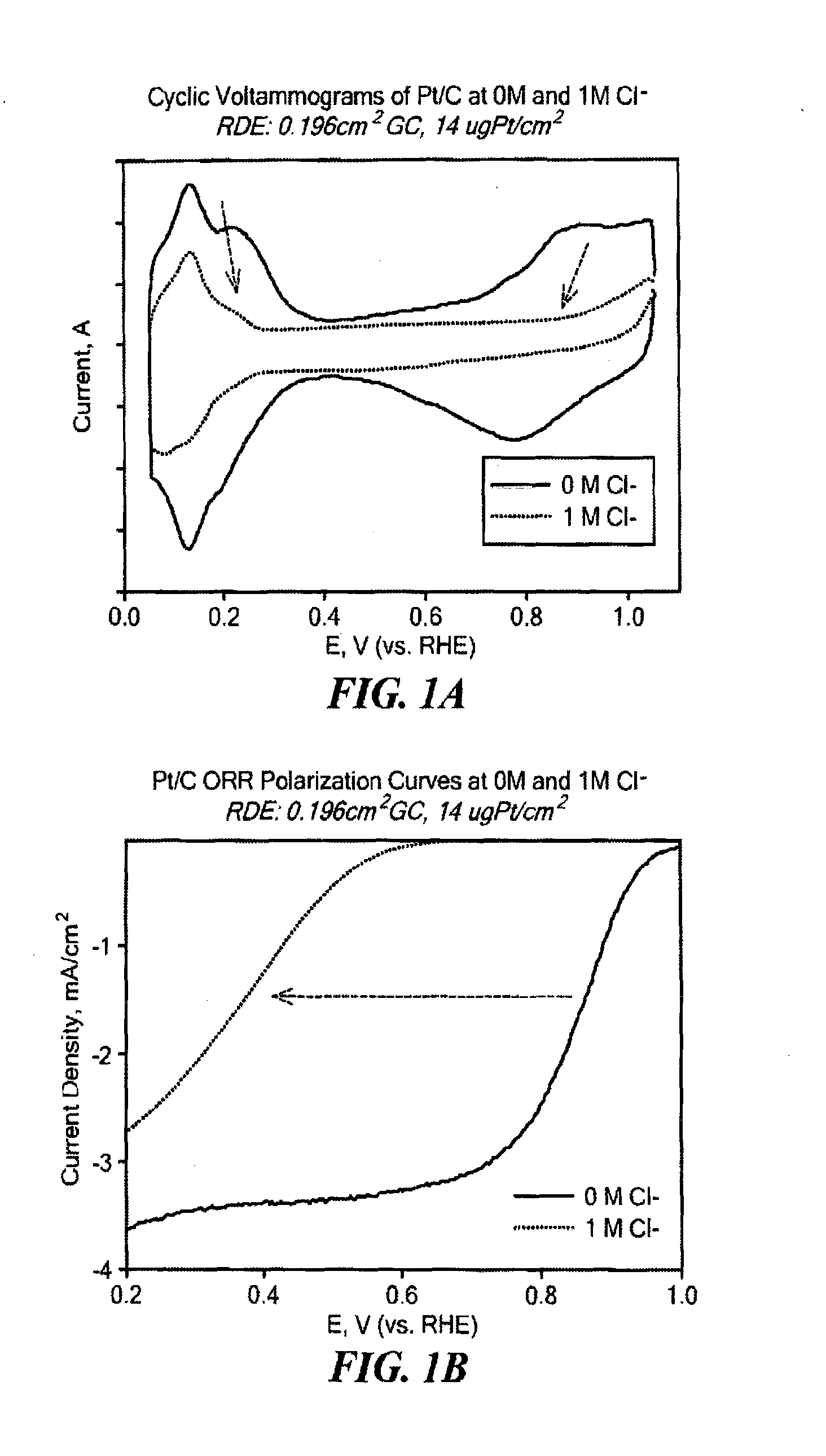Non-Noble Metal Electrocatalysts for Oxygen Depolarized Cathodes and Their Uses
a metal electrocatalyst and oxygen depolarization technology, which is applied in the direction of acid electrolytes, chemical/physical processes, iron organic compounds, etc., can solve the problems of reducing the efficiency of the cell, requiring high loading of metals, and significant cost and energy savings
- Summary
- Abstract
- Description
- Claims
- Application Information
AI Technical Summary
Benefits of technology
Problems solved by technology
Method used
Image
Examples
example 1
Synthesis of Zif-8 MOF Using Microwave-Accelerated Synthesis
[0100]For the synthesis of Zif-8, zinc nitrate tetrahydrate (1.1 equivalence) and 2-methylimidazole (1 equivalence) were combined in a glass microwave tube and dissolved in dimethylformamide (1 mL / 1.67E-4 mol combined starting material). The tube, equipped with a stir bar, was capped and heated to 140° C. (same temperature as conventional furnace synthesis) with stirring for 40 minutes. A white or light yellow crystalline powder was afforded upon washing with chloroform and filtering the heated material. The product was dried to yield the MOF material.
[0101]The reaction time was significantly shorter than that required in the conventional furnace synthesis. For example, the furnace synthesis of Zif-8 reaction requires over 24 h not including a ramp rate of 5° C. / min 22-140° C. and a subsequent cooling rate of 0.4 C / min back to room temperature from 140° C. In contrast, microwave accelerated Zif-8 synthesis occurred with a 2...
example 2
Synthesis of Zif-8 MOF with Encapsulation of Catalytic Precursors in One Pot
[0103]The one-pot Zif-8 MOF formation-precursor encapsulation synthesis was carried out as shown in the scheme below.
[0104]In flask A, 2-methylimidazole (160 equivalence) was dissolved in methanol with stirring (1 mL / 1.60E-4 mol). In flask B, zinc nitrate tetrahydrate (80 equivalence) and 1,10-phenanthroline monohydrate (160 equivalence) were dissolved in a 1 / 1.2 v / v mixture of water / methanol (1 mL / 0.002 mol combined reagents) with stirring. Once fully dissolved, flask B solution was poured into flask A solution, and iron(II) acetate (1 equivalence) was added to the stirring mixture. This was capped and stirred at room temperature for 2 h-24 h until a white precipitate formed. See Liedana 2012 for reaction condition details. The reaction contents were centrifuged at 4000 rpm for 30-60 min, washed with methanol, and centrifuged again, then dried to afford a powdery pellet of product.
PUM
| Property | Measurement | Unit |
|---|---|---|
| Temperature | aaaaa | aaaaa |
| Temperature | aaaaa | aaaaa |
| Electrical resistance | aaaaa | aaaaa |
Abstract
Description
Claims
Application Information
 Login to View More
Login to View More - R&D
- Intellectual Property
- Life Sciences
- Materials
- Tech Scout
- Unparalleled Data Quality
- Higher Quality Content
- 60% Fewer Hallucinations
Browse by: Latest US Patents, China's latest patents, Technical Efficacy Thesaurus, Application Domain, Technology Topic, Popular Technical Reports.
© 2025 PatSnap. All rights reserved.Legal|Privacy policy|Modern Slavery Act Transparency Statement|Sitemap|About US| Contact US: help@patsnap.com



